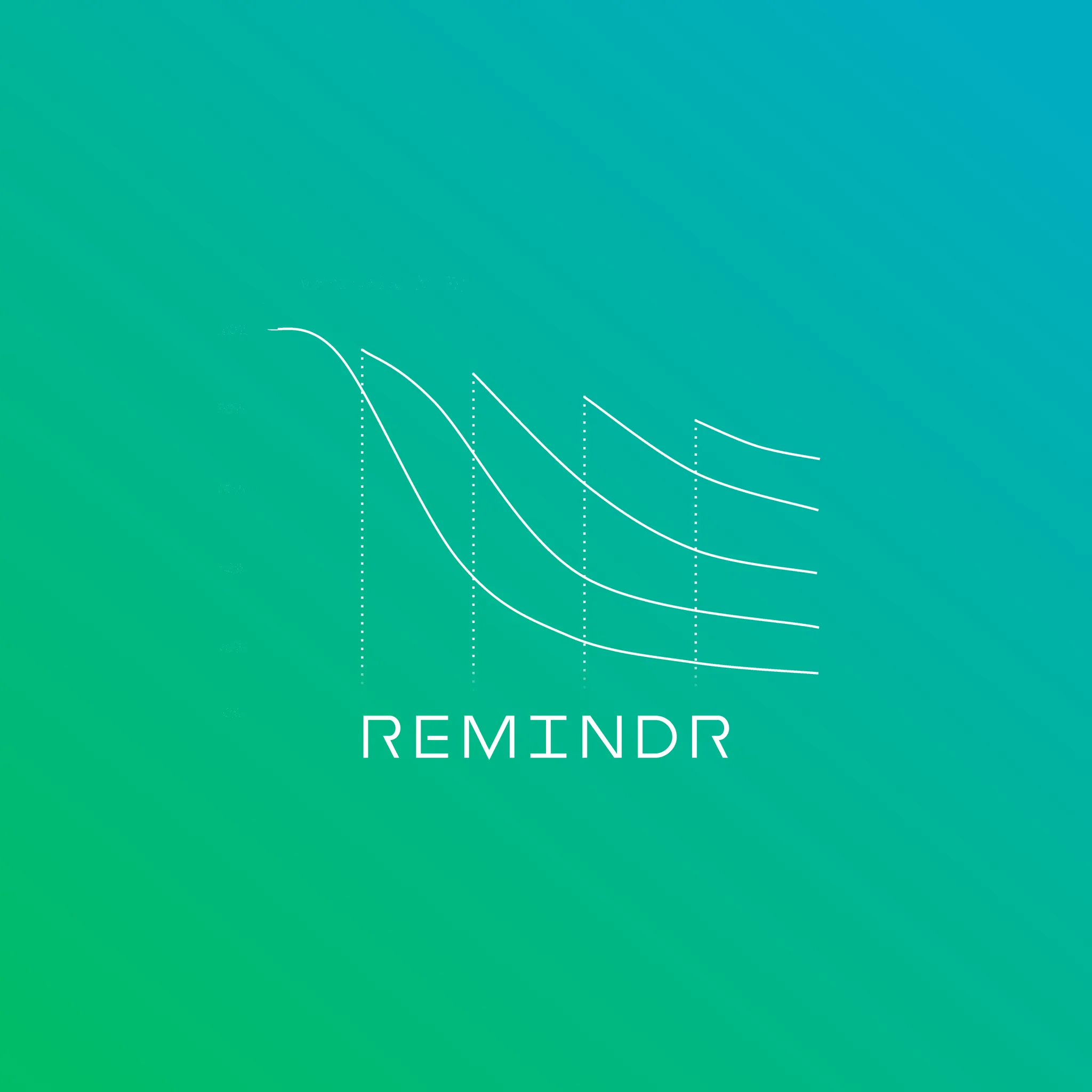Remindr
This is my first mobile application made with Flutter! It allows you to apply Hermann Ebbinghaus’s principle of spaced repetition and helped me organize my revisions well during my second year of preparatory classes.
Result
This is a very simple application in which the user can create course reminders and follow these reminders on specific dates.
They can also evaluate how each of their reminders went to plan the others.
There is an authentication system.
The forgetting curve
The forgetting curve represents the persistence in memory of information over days and reminders performed. It appears that well-spaced reminders allow information to be anchored in memory durably, and quite easily.
But what is a reminder? A reminder is a recall. So to memorize information well, you have to try to recall it on very specific dates and depending on these, program others.
This idea had quite seduced me but still seemed quite difficult to implement. I couldn’t imagine putting tons of reminders on Google Calendar (for example) to know when to do my reminders or even having to establish a follow-up to properly plan the following reminders.
The idea therefore came to me immediately: develop a mobile application.
The challenge
The thing is that I had never developed a mobile application before. However, I had heard of Flutter. It is a framework developed by Google that allows you to do cross-platform mobile development. “Cross-platform” means that it is possible to create an Android and iOS mobile application with one and the same code.
During this period, I had just finished my first year of preparatory classes and we were in full lockdown so I had time. So I decided to learn Dart and Flutter and launch into developing this application.
I started by making a mockup and determining the graphic charter. The mockup remained until the end of the project, but the graphic charter changed completely. In fact, I adapted it to the application logo (which a friend had kindly offered to create).
After that I launched into developing the application.
What I learned
I obviously learned to use Flutter but I also paid a lot of attention to the readability of my code and how I organize it.
For the first time, I was also able to apply async development. I also discovered Firebase and authentication.
So this is the story of my first mobile application: a leap into the unknown and many beautiful discoveries.
However, the application is not available on the Play Store. I think it was not yet ready for that. First of all, the first people I talked to about the application, hoping to find my first testers, didn’t seem very excited. Some found the application useless, others interesting but no one really tested the application long term. And it wasn’t their fault! Indeed, I hadn’t bothered to put in a notification system for example!




